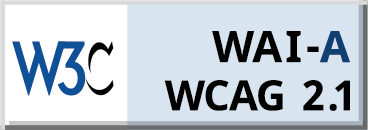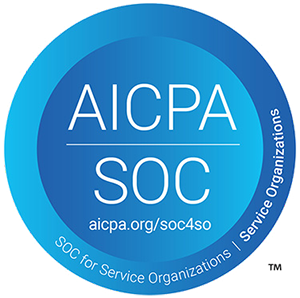Online assessments have provided immense flexibility, making it easier for educational institutions to evaluate candidates remotely. However, this shift also introduces significant challenges, particularly when it comes to ensuring the security and fairness of exams. As the use of online platforms grows, concerns surrounding cheating, fraud, and data breaches have become more prevalent. These risks can undermine the integrity of the evaluation process, leading to inaccurate results and a loss of trust in the assessment system. In this article, we’ll explore why securing online assessments is crucial, how you can implement safety measures, and how Talview can help ensure safe assessment practices.
Why Securing Online Examinations Is Important?
1. Ensuring Academic Integrity
Online assessments need security to maintain the fairness and credibility of exams. Without proper security measure in place, exams can be easily manipulated, undermining their value.
2. Protecting Data Privacy
With increasing cyber threats, securing online assessments helps protect candidates' personal information. Proper security measures ensure that sensitive data remains confidential and is not exposed to unauthorized access.
3. Preventing Cheating and Fraud
Lack of security in online exams opens the door for dishonest practices like cheating and impersonation. Implementing strict security protocols ensures that the evaluation process remains fair and accurate.
4. Maintaining Trust in the System
For both educational institutions and businesses, a secure assessment environment fosters trust in the system. Candidates and stakeholders need assurance that the exam process is legitimate and unbiased.
5. Addressing Cybersecurity Risks
Cyber threats are a growing concern, with hackers targeting online assessments to manipulate results. Strong security measures are essential to guard against these risks and preserve the integrity of the testing process.
Top 5 Strategies for Creating Safe and Secure Online Assessments
Online assessments must prioritize security to maintain credibility, fairness, and trust. Leveraging advanced tools and practices ensures a seamless and secure testing experience. Here are the top five strategies for creating safe and secure online assessments:
1. Implement Advanced Proctoring Solutions
Proctoring is essential to ensure a fair testing environment by monitoring candidates’ behavior and preventing misconduct. Talview offers a variety of proctoring methods to suit different needs:
-
Record & Review Proctoring: Records video, audio, and screen activity during the test. A proctor reviews the footage post-assessment to flag any additional irregularities, which were not detected earlier, without disrupting the candidate.
-
Live Proctoring: A proctor monitors candidates in real-time, intervening if suspicious activity occurs.
-
Automated Proctoring: Uses AI to analyze candidates' behavior and detect unusual activities, such as looking away or accessing unauthorized materials.
-
AI Proctoring Agent (Alvy): Talview’s AI proctoring agent continuously monitors candidates using advanced algorithms and LLMs to detect irregularities, flagging issues for immediate review.
These proctoring methods ensure fairness and discourage cheating.
2. Use Secure Browsers
A secure browser locks down a candidate’s computer to prevent access to external resources, applications, or websites during the exam. Talview’s Secure Browser creates a distraction-free environment by:
-
Blocking unauthorized websites and applications.
-
Disabling screen sharing, screen captures, and printing.
-
Restricting navigation outside the assessment window.
This ensures candidates focus solely on the test and reduces opportunities for cheating.
3. Randomize Questions and Answers
Randomization minimizes the chances of collusion by ensuring that no two participants receive identical assessments. This strategy can be enhanced with:
-
Drawing questions from a large pool to create unique question sets.
-
Shuffling answer choices for multiple-choice questions.
Talview supports question pool integration, enabling the creation of dynamic and unpredictable tests, enhancing security and fairness.
4. Verify Candidate Identity
Identity verification ensures that the registered participant is the one taking the assessment. Talview employs robust identity verification methods such as:
-
Biometric facial recognition.
-
Scanning government-issued IDs.
-
Conducting live video verification.
These measures reduce the risk of impersonation and foster trust in the examination process.
5. Enforce Data Security Measures
Protecting sensitive candidate information and exam data is critical in online assessments. Talview addresses cybersecurity concerns by implementing:
-
End-to-End Encryption: Ensures secure transmission of data.
-
Access-Controlled Storage: Protects exam questions and results from unauthorized access.
-
Regular Audits: Reviews systems for vulnerabilities and maintains compliance with data protection standards.
With these features, Talview ensures that data privacy and security are prioritized throughout the assessment process.
Conclusion
Creating safe and secure online assessments is an ongoing process that requires a combination of technology, clear policies, and regular evaluation. By implementing these strategies, educators and organizations can ensure the fairness, credibility, and reliability of their assessments. Embracing these best practices not only protects the integrity of the process but also fosters trust among participants.
By adopting these strategies and leveraging tools like Talview, educational institutions and organizations can create a secure, reliable, and trustworthy online assessment environment. This not only upholds the integrity of the testing process but also fosters confidence among participants and stakeholders.







Leave a Reply